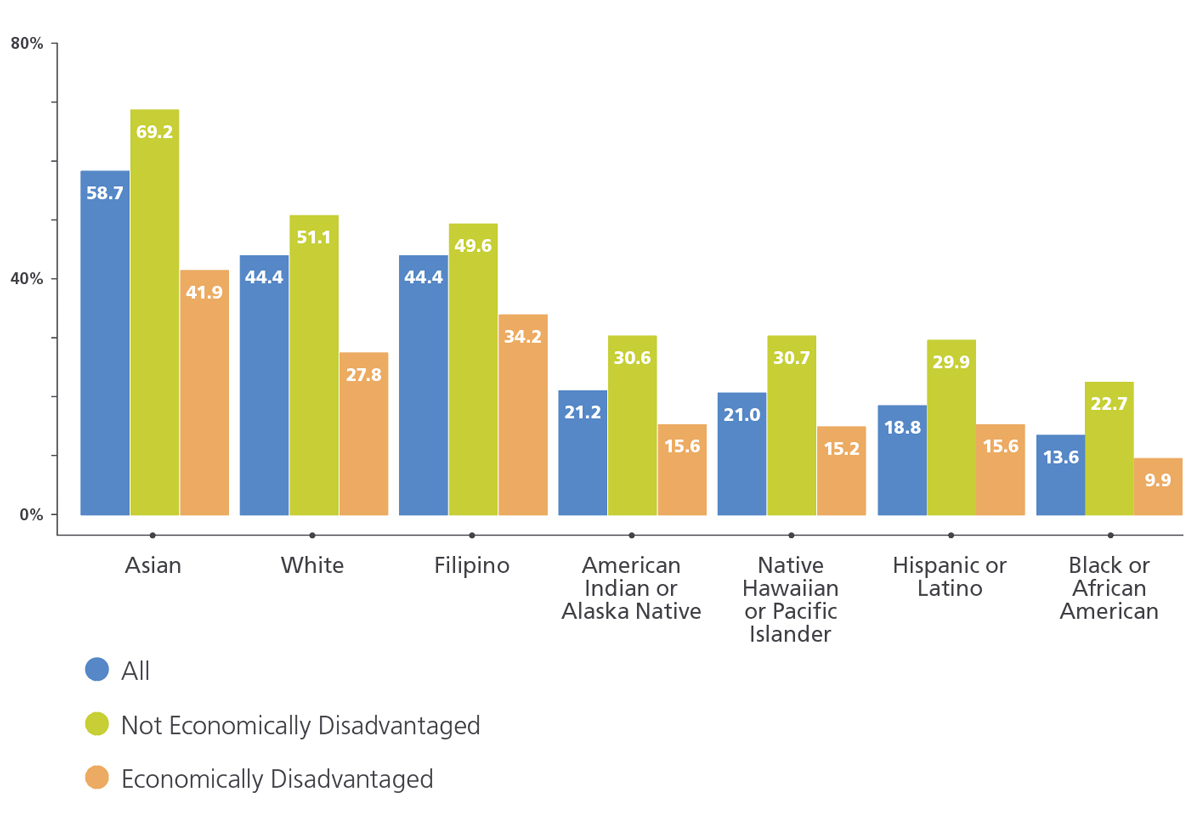However, it is clear from the data that access to the curriculum continues to be impacted by not just economic status but by ethnicity. For example, all too familiar gaps persist among students by ethnicity (see Figure 1).
Particularly striking is how many students of color, even if they are not economically disadvantaged, are not receiving the instruction and resources that allow them to meet or exceed standards. Even an economically disadvantaged white student is more likely to meet or exceed science standards than an African American student who is not economically disadvantaged.
The results of the CAST continue to show that many economically disadvantaged students and students of color in California have limited educational opportunities.

It is also important to remember that there is much that governing board members can do to ensure that their district is meeting the needs of the state’s most underserved students when implementing new standards. From ensuring that course materials are culturally relevant to eliminating barriers for enrolling in rigorous coursework, many of the solutions to closing achievement gaps are found in districts and schools across California.
CSBA encourages board members to learn more about the implementation of NGSS, their potential for meeting the needs of our most underserved students and district strategies for effective implementation. CSBA has several governance briefs and resources that can support governance teams in this journey. These resources can be found at www.csba.org/STEM.